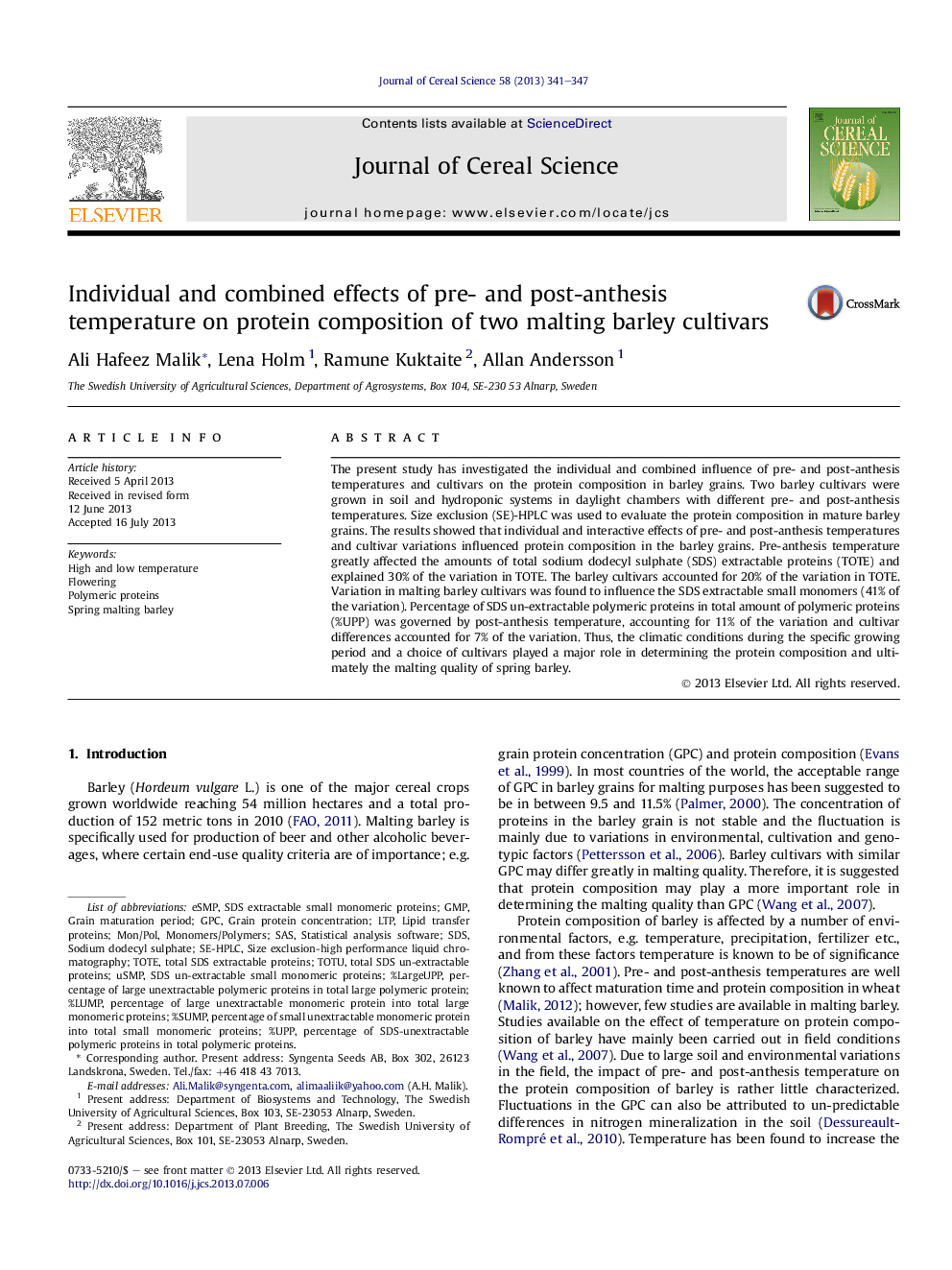| Article ID | Journal | Published Year | Pages | File Type |
|---|---|---|---|---|
| 6378248 | Journal of Cereal Science | 2013 | 7 Pages |
Abstract
The present study has investigated the individual and combined influence of pre- and post-anthesis temperatures and cultivars on the protein composition in barley grains. Two barley cultivars were grown in soil and hydroponic systems in daylight chambers with different pre- and post-anthesis temperatures. Size exclusion (SE)-HPLC was used to evaluate the protein composition in mature barley grains. The results showed that individual and interactive effects of pre- and post-anthesis temperatures and cultivar variations influenced protein composition in the barley grains. Pre-anthesis temperature greatly affected the amounts of total sodium dodecyl sulphate (SDS) extractable proteins (TOTE) and explained 30% of the variation in TOTE. The barley cultivars accounted for 20% of the variation in TOTE. Variation in malting barley cultivars was found to influence the SDS extractable small monomers (41% of the variation). Percentage of SDS un-extractable polymeric proteins in total amount of polymeric proteins (%UPP) was governed by post-anthesis temperature, accounting for 11% of the variation and cultivar differences accounted for 7% of the variation. Thus, the climatic conditions during the specific growing period and a choice of cultivars played a major role in determining the protein composition and ultimately the malting quality of spring barley.
Keywords
Related Topics
Life Sciences
Agricultural and Biological Sciences
Agronomy and Crop Science
Authors
Ali Hafeez Malik, Lena Holm, Ramune Kuktaite, Allan Andersson,
